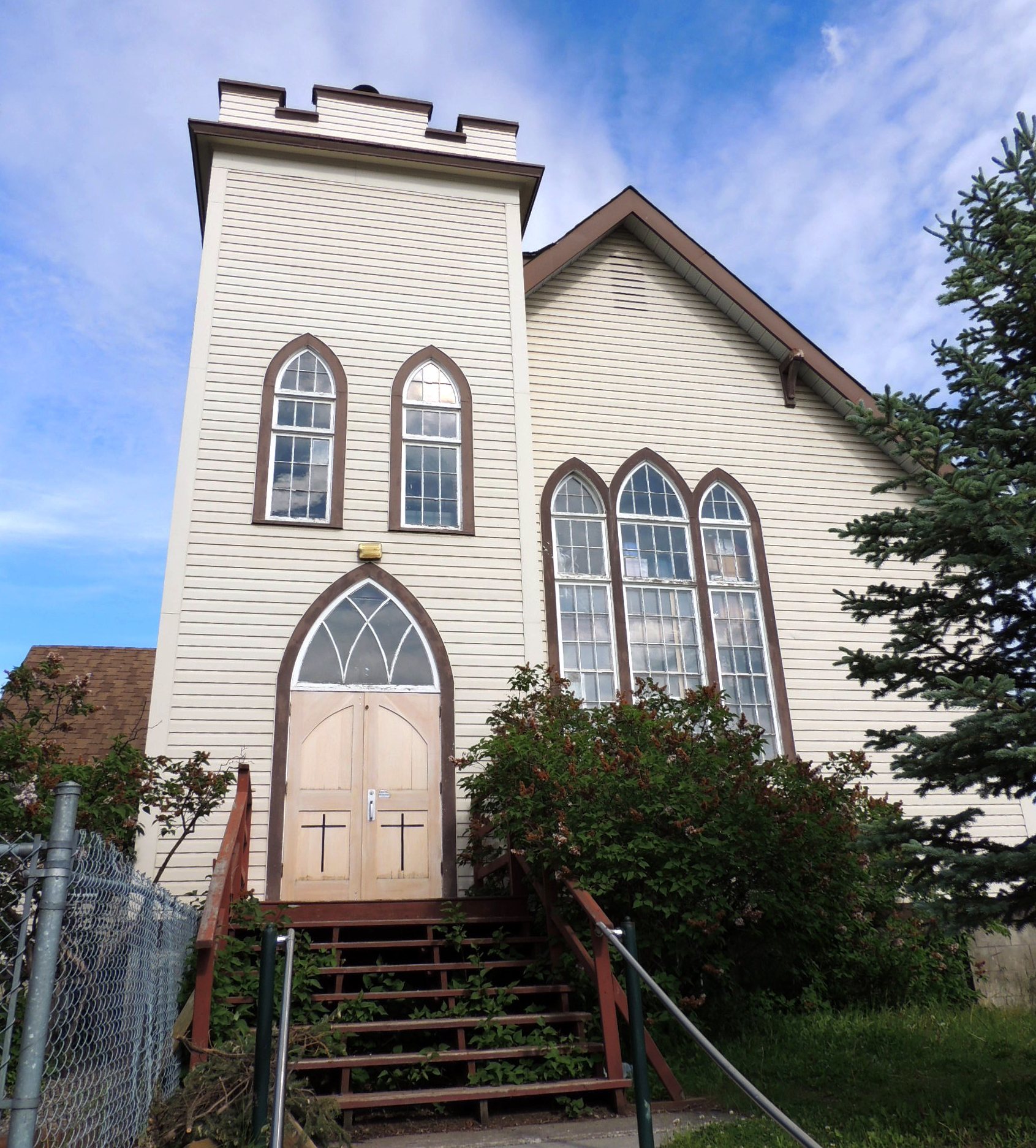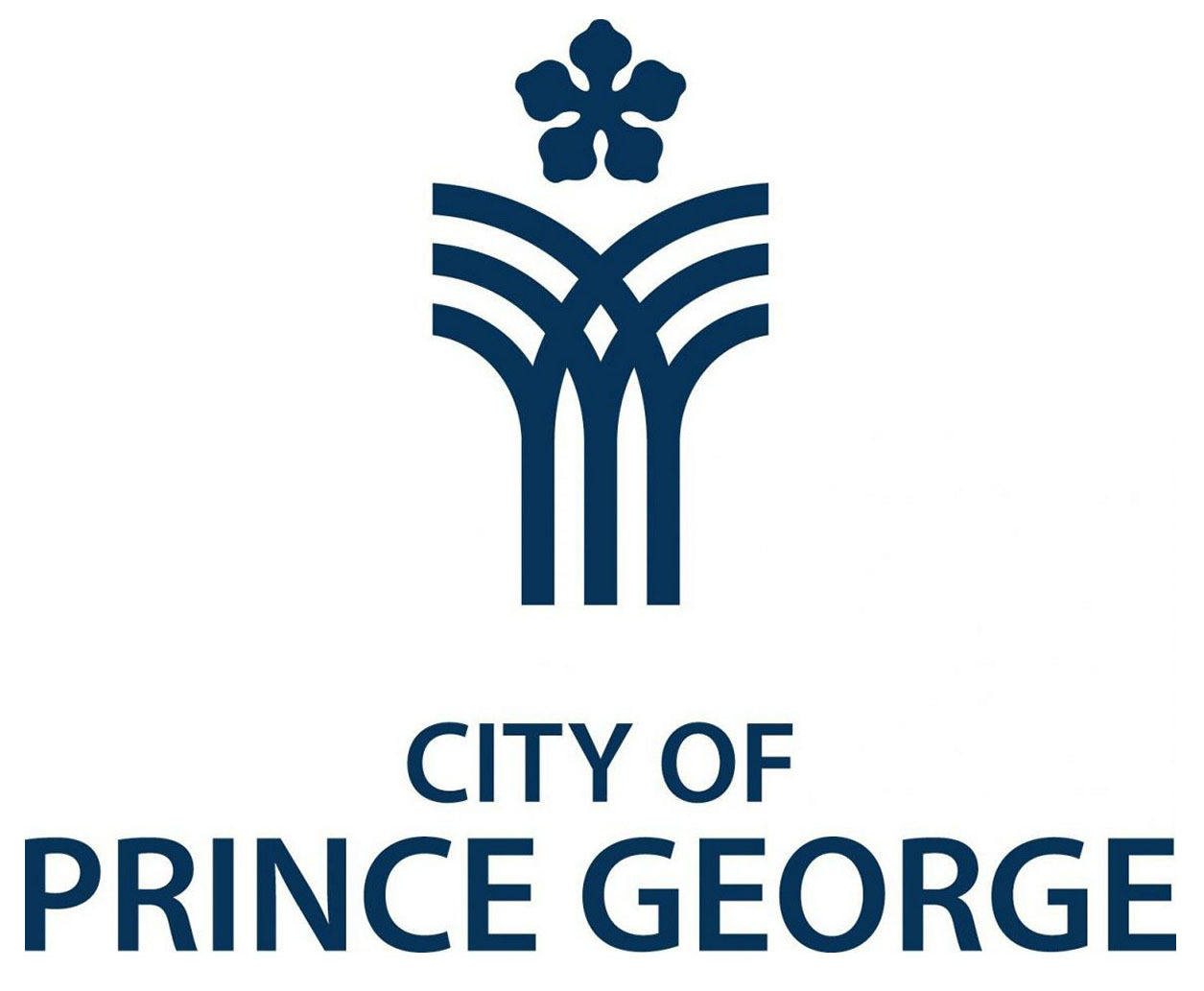
Knox United Church - Prince George, British Columbia
Posted by:  T0SHEA
T0SHEA
N 53° 54.962 W 122° 44.930
10U E 516496 N 5974209
This Knox United Church is at the corner of Brunswick Street and 5th Avenue.
Waymark Code: WM14TVT
Location: British Columbia, Canada
Date Posted: 08/23/2021
Views: 2
The Knox Presbyterian Church was built in 1922 it became the home of two congregations: the Knox Presbyterian Church of Prince George and the First Presbyterian Church of Central Fort George. The church became a busy community centre and was used for more than religious services, with a large number of social events and fundraisers taking place in the building
In 1955, the church expanded with an addition designed by local architect Trelle Morrow. He included laminated timber beams in the construction, a feature that allowed a large open space to be built without unsightly support pillars.
In the 1920s and 1930s, Knox United Church was the centre of winter fun. There was a steep gully in front of the building perfect for sledding, and an outdoor skating rink was nearby. Eventually, the gully experienced a fate similar to that of other river ravines and swamps in the area. It was filled with gravel and could no longer be used by children as a hill for sledding
Transcribed from sign
”PRINCE GEORGE
HERITAGE COMMISSION
Statement of Significance
Knox United Church
Address 1448 5th Avenue
Date of Construction: 1922
Other Names: Knox Church
Adopted by the Heritage Commission: November 23, 2017
Last Updated: December 14, 2017
Description:
In November 1922, a new Knox Church with basement, vestry, balcony, entrance lobby and office was officially opened on five lots at the corner of Fifth Avenue and Brunswick Street in downtown Prince George. This site was chosen to serve as a focal point due to population shifts from the earlier communities of South Fort George and Central Fort George into the City of Prince George.
Heritage Value:
The heritage value of this building rests as the only remaining Gothic Revival design in the City of Prince George. There were earlier examples of Gothic Revival design for churches in the city, but these have long disappeared.
Heritage value also exists with the building being only one of two known structures remaining in the city which was designed Architect, Henry Wilson, who had established an office in South Fort George in 1913.
Heritage value can be noted in the floor plan of the building which demonstrates a tower/nave relationship originating with Protestant churches dating back to Early English Village churches in the Middle Ages, and becoming prominent in the 1800s in North America through the medium of wood construction. Entrance to the church is through the tower which is considered to be a transition zone between the secular world outside and the sacred atmosphere of the nave.
Over the past 90 years. the downtown location this Church has been a focal point, both for worship services and community functions. Today, the building is no longer used for regular congregational services, but attracts numerous community activities on a daily basis, including a child day-care operation.
Heritage value lies with trees still existing on the perimeter of the site from a 1933 landscaping upgrading of the site. The value of evergreen trees in the city core is appreciated by not only parishioners, but by the community at large.
Character Defining Elements:
Salient features of the church design include a crenellated bell tower and Gothic Revival window patterns. Gaps. or "crenels'. are traditional in defensive structures, but today the crenels are decorative only, perhaps rendering a symbol of sacred defense.
The pointed arch incorporated into the window design is likely the most readily recognized Gothic Revival motif in Canada from the early 19th century into the 20th century. Revival motifs are strictly decorative. possibly a sense of built-in quality.
The main entrance to the church is through the tower. The plan reveals an entrance lobby, coat room and stairs leading to the balcony and the basement. Such an entry provides a transitional space between the outer world and the sacred world of the nave, a feature of Early English Village churches in earlier years.
The form of the building has not been compromised in any way since the date of construction, although modest interior changes have been made throughout.
Sources:
Researched and prepared by Trelle Morrow (Prince George Heritage Commission), 2016.
Runnalls, F.E. The History of Knox United Church, Prince George Printers Ltd., Prince George. B.C., 1945
Stemp, R. Secret Language of Churches & Cathedrals. Duncan Baird Publishers. London. UK., 2010” Source: Prince George Heritage Commission

Prince George Montessori Education Society is now located in the Former Knox United Church and possibly it is now Trinity United Church.
 Prince George
Prince George
The City of Prince George began as a fur trading post founded in 1807 by Simon Fraser on traditional Lheidli T'enneh territory. Agricultural settlements were established around the trading post, then named Fort George, in the early 1900s when the Grand Trunk Pacific Railway (later CN Rail) entered the region.
Prince George is the largest city in northern British Columbia, with a population of approximately 82,290 residents. Prince George is on the Fraser and Nechako rivers making the area a must see for travelers and sport enthusiasts across Canada. There are over 100 parks and 100 kms of trails.
Price George has a lot to offer and if you have the time I would recommend at least two days to enjoy all that it has to offer such as: Lheidli T'enneh Memorial Park, Prince George Railway Museum, Huble Homestead Historic Site and Mr. PG who greets you as you enter town.